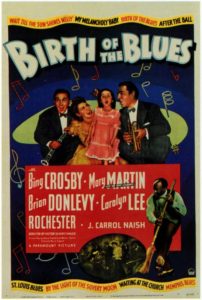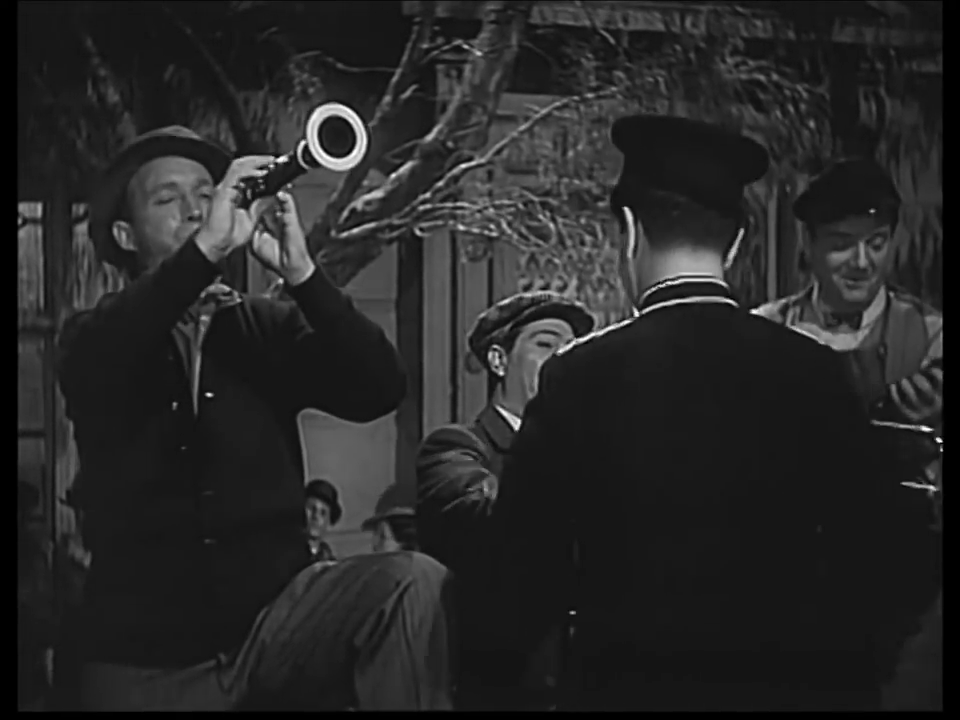“Our music sure is going high-brow!”
|

Synopsis:
With support from a family servant (Eddie ‘Rochester’ Anderson), a clarinetist (Bing Crosby) in New Orleans builds on a rich tradition of African-American blues music in constructing his own White band — including a recently jailed cornet player (Brian Donlevy) and a singer (Mary Martin) with a young aunt (Carolyn Lee).
|
|
Genres, Themes, Actors, and Directors:
- Bing Crosby Films
- Brian Donlevy Films
- Gangsters
- Love Triangle Films
- Musicians
Review:
The Oscar-nominated score is the best feature by far of this white-washed recounting of “how the blues were born”. To the film’s credit, it openly acknowledges the origination of the blues with Black players (albeit showing them stereotypically wide-eyed), and doesn’t shy away from using era-specific language around the “need” to find a White cornet player for the band — but modern-day viewers’ tolerance for watching this kind of narrative will likely be limited. Making matters worse, the framing storyline is shaky at best: meager comedic mileage is milked out of the band’s “meet-cute” with Martin and her 5-year-old (!) aunt (Carolyn Lee); a fabricated (and unconvincing) love triangle plays out between Crosby, Martin, and Donlevy; and the sudden introduction of a gangster-driven subplot near the end forces things to literally get moving. While some film fanatics may be curious to see Martin in one of her rare on-screen appearances, this one unfortunately doesn’t do her justice.
Redeeming Qualities and Moments:
- Many fine musical numbers

- Some atmospheric cinematography

Must See?
No; you can skip this one unless you’d like to hear the music.
Links:
|
One thought on “Birth of the Blues (1941)”
First viewing. Skip it – for the accurate reasons already well-stated in the assessment. The music notwithstanding, it’s a bit of a chore to get through this one – and there are other, better ways to learn this history.